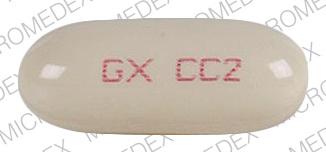Amprenavir Disease Interactions
There are 5 disease interactions with amprenavir.
Amprenavir oral solution (applies to amprenavir) renal/liver disease
Major Potential Hazard, High plausibility. Applicable conditions: Renal Dysfunction
The use of amprenavir oral solution is contraindicated in patients with renal and/or hepatic failure due to the large amount of excipient propylene glycol in the formulation. In general, use of the solution should be limited to patients in whom the capsule formulation or other protease inhibitors are not feasible options. Caution is advised in patients with renal or hepatic impairment due to increased risk of propylene glycol-associated adverse events. All patients receiving the oral solution should be monitored for signs of propylene glycol toxicity including seizures, stupor, tachycardia, hyperosmolality, lactic acidosis, renal toxicity, and hemolysis.
References
- (2001) "Product Information. Agenerase (amprenavir)." Glaxo Wellcome
Amprenavir (applies to amprenavir) liver disease
Moderate Potential Hazard, High plausibility.
Amprenavir is primarily metabolized by the liver. Patients with liver disease may be at greater risk for adverse effects from amprenavir due to decreased drug clearance. Therapy with amprenavir should be administered cautiously in patients with moderate or severe hepatic impairment, and the dosage should be reduced as follows: 450 mg (three 150 mg capsules) or 513 mg (34 mL oral solution) orally twice a day for Child-Pugh score 5 to 8; 300 mg (two 150 mg capsules) or 342 mg (23 mL oral solution) orally twice a day for Child-Pugh score 9 to 12.
References
- (2001) "Product Information. Agenerase (amprenavir)." Glaxo Wellcome
- Sommadossi JP (1999) "HIV protease inhibitors: pharmacologic and metabolic distinctions." AIDS, 13, s29-40
Fos-/amprenavir (applies to amprenavir) nephrolithiasis
Moderate Potential Hazard, Moderate plausibility. Applicable conditions: Dehydration, History - Nephrolithiasis
Cases of nephrolithiasis have been reported during postmarketing surveillance in HIV-infected patients receiving amprenavir or fosamprenavir therapy. Because these events were reported voluntarily during clinical practice, estimates of frequency cannot be made. Therapy with amprenavir or fosamprenavir should be administered cautiously in patients with a current or past history of nephrolithiasis. Adequate hydration is recommended. Those who are dehydrated may be at increased risk and should be encouraged to consume additional amounts of liquid or given intravenous fluids if necessary. Patients should be instructed to seek medical attention if they experience potential signs and symptoms of urolithiasis such as flank pain, hematuria, dysuria, and urinary urgency. Temporary interruption or discontinuation of therapy may be required.
References
- (2003) "Product Information. Lexiva (fosamprenavir)." GlaxoSmithKline
PIs (applies to amprenavir) hyperglycemia
Moderate Potential Hazard, Moderate plausibility. Applicable conditions: Abnormal Glucose Tolerance, Diabetes Mellitus
New onset diabetes mellitus, exacerbation of preexisting diabetes mellitus, hyperglycemia, and some cases of diabetic ketoacidosis have been reported during postmarketing surveillance in HIV-infected patients treated with protease inhibitors. Some patients required either initiation or dosage adjustments of insulin or oral hypoglycemic agents for treatment of these events. In some cases, hyperglycemia persisted despite discontinuation of protease inhibitor therapy. A causal relationship has not been established between protease inhibitor therapy and these events. Monitoring patients for hyperglycemia, new onset diabetes mellitus, or exacerbation of diabetes mellitus should be considered during protease inhibitor therapy.
References
- (2022) "Product Information. Norvir (ritonavir)." AbbVie US LLC, SUPPL-25
- (2020) "Product Information. Reyataz (atazanavir)." Bristol-Myers Squibb, SUPPL-44
- (2023) "Product Information. Prezista (darunavir)." Janssen Pharmaceuticals, SUPPL-68
- (2019) "Product Information. Lexiva (fosamprenavir)." ViiV Healthcare, SUPPL-41
- (2020) "Product Information. Kaletra (lopinavir-ritonavir)." AbbVie US LLC, SUPPL-54
- (2021) "Product Information. Viracept (nelfinavir)." Agouron Pharma Inc, SUPPL-25
- (2020) "Product Information. Invirase (saquinavir)." Roche Laboratories, SUPPL-25
- (2020) "Product Information. Aptivus (tipranavir)." Boehringer Ingelheim, SUPPL-21
Amprenavir (applies to amprenavir) vitamin K deficiency
Minor Potential Hazard, Low plausibility.
Formulations of Agenerase (brand of amprenavir) provide high daily doses of vitamin E exceeding the Reference Daily Intake (adults 30 Intl units, pediatrics approximately 10 Intl units). The effects of long-term, high-dose vitamin E administration in humans are unclear. High levels of vitamin E may exacerbate the blood coagulation defect of vitamin K deficiency caused by anticoagulant therapy or malabsorption.
References
- (2001) "Product Information. Agenerase (amprenavir)." Glaxo Wellcome
Amprenavir drug interactions
There are 510 drug interactions with amprenavir.
Amprenavir alcohol/food interactions
There is 1 alcohol/food interaction with amprenavir.
More about amprenavir
- Check interactions
- Compare alternatives
- Side effects
- Dosage information
- During pregnancy
- Drug class: protease inhibitors
Related treatment guides
Drug Interaction Classification
| Highly clinically significant. Avoid combinations; the risk of the interaction outweighs the benefit. | |
| Moderately clinically significant. Usually avoid combinations; use it only under special circumstances. | |
| Minimally clinically significant. Minimize risk; assess risk and consider an alternative drug, take steps to circumvent the interaction risk and/or institute a monitoring plan. | |
| No interaction information available. |
Further information
Always consult your healthcare provider to ensure the information displayed on this page applies to your personal circumstances.


